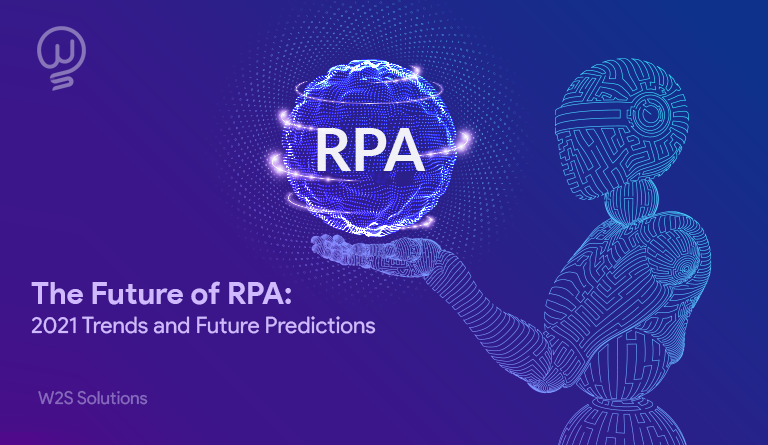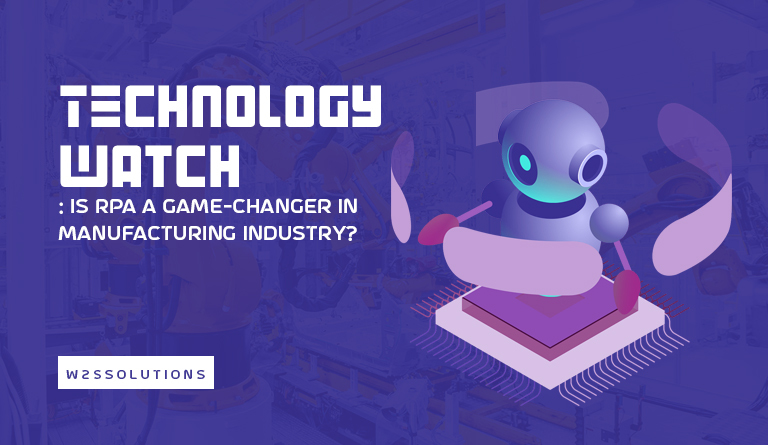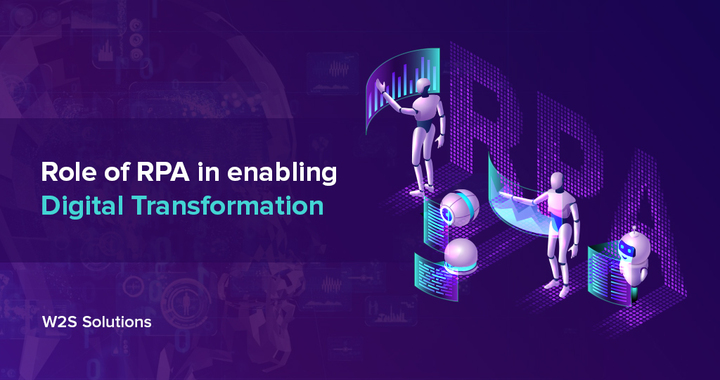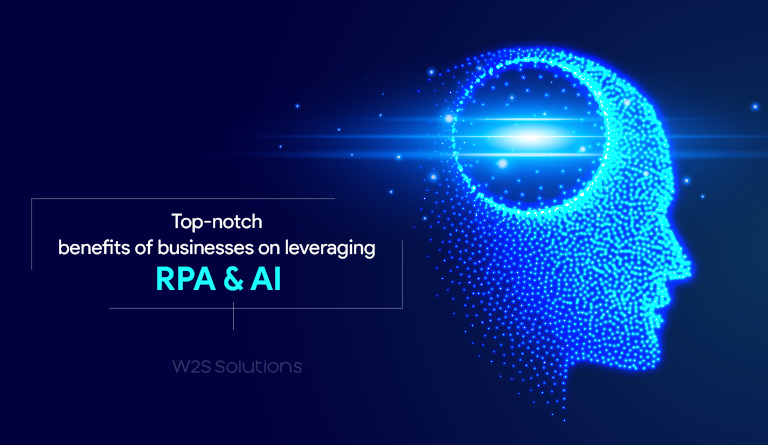The world is slowly moving towards high-end data usage. Most of the industries are using the data for gathering the insights of the future and working accordingly. Moreover, all businesses have turned digital to enjoy the maximum benefits.
A report from IDC states that global enterprises are expected to invest a large amount which will be around $2.3 trillion on Digital Transformation within 2023 it seems! The world is already digital here by unfolding all possibilities.
To make the business operations simple, one of the popular futuristic technologies is Robotic Process Automation. If you are constantly worried about the efficiency of the business operations, this can be a perfect choice.
So what is RPA all about? How can this technology disrupt your business? We have discussed the answers to all your questions in this blog. Let’s get started!
Robotic Process Automation: Why is this needed?
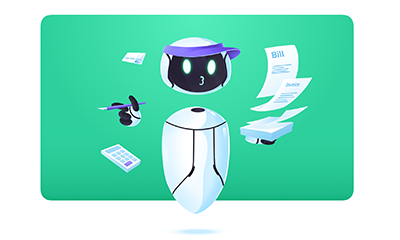
Automation is the term that can turn the revenue of the businesses to a higher level. RPA is here to support such automation. Though the name deals with robots, the truth is the technology doesn’t employ physical robots but business-critical software robots which automates even a complex task.
Robotic Process Automation (RPA) requires no coding efforts and performs repetitive tasks for 24*7. These processes are handled by software bots which are work by blending automation, machine learning, computer vision, etc.
Read Also – Business Benefits of IoT Technology in Automobile sectors
For instance, consider you are hooked up with a bunch of copy and paste & data entry jobs. Will you sit for long hours and keep on working with this complex task or go with a software robot that can perform them in seconds?
Definitely, you would move with the second choice. This is why RPA is needed for most of the business sectors. Moreover, industries that haven’t turned digital are adopting this futuristic technique which can enhance the business operations and minimize the costs involved.
Any Company which uses labors on a large scale can implement RPA to enhance productivity by minimizing the manual efforts. This can in turn save a lot of money and time as well. Similar to industrial robots, these software robots can also improve the quality and production rates.
| According to a study conducted by Grand View, the current market of RPA is around $1.1 Billion and is expected to grow at a rate of 33.6% from 2020 to 2027! |
This has made most of the Small & Medium Scale industries as well as giant Enterprises to implement RPA and align the business processes. Moreover, these robots are trained to follow a series of steps such as filling out the data, updating user permissions, creating & sending invoices, updating spreadsheets, etc.
There are a couple of robots available in Robotic Process Automation that are adopted by various industries. They are:
- Programmable Bots
Programmable Bots are the ones that work on the defined set of rules and instructions. It means that bots will figure out the processes, program themselves for specific functions, and maintain throughout the process.
- Intelligent Bots
These bots are implemented with AI and ML capabilities which can identify and analyze how employees interact via various applications. Once they perform these tasks, they would check for the priority of these tasks and perform them.
How RPA differentiates from the traditional automation process?
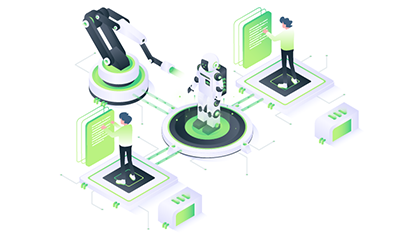
In particular, both RPA and traditional automation processes are implemented to enhance and automate business operations either through human processes or software robots. However, here are the ways in which they can are differentiated:
- The traditional automation process would involve an entire change in the working system. On the other hand, in the case of RPA, bots work on the front-level UI and interact with the systems similar to humans.
- Moreover, these RPA robots are agnostic which can automate processes for multiple processes.
- Traditional Automation cannot be updated once set. But with RPA, it can be upgraded and is also scalable when compared to the former.
| John Cryan, CEO of Deutsche Bank says!
“In our banks, we have people behaving like robots doing mechanical things, tomorrow we’re going to have robots behaving like people”! |
How RPA actually works?
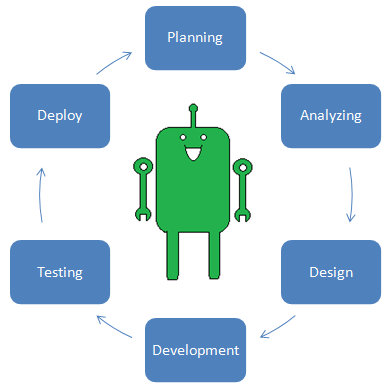
Similar to industrial robots that transform the floors, these software robots transform the back office. It replicates employee work such as operating files, inputting data, copy-pasting data, etc in an automated manner. Added, they also integrate with various systems through integrations and screen scraping which enables RPA tools to perform tasks.
1 minute of RPA’s work equals to 15minutes of manual work. This has made most of the digital transformation solutions providers also adopt RPA and work for their clients.
Added, Robots can run from employees’ desktops or from cloud systems. Here are a couple of features with RPA:
- Integrations
In order to work on the tasks, it is essential to integrate RPA with enterprise applications. Though the bots can scrape and perform the tasks, it is important that it should be reliable to have app integration compared to screen scraping which has a high possibility of errors. Most of the bots work with legacy applications, desktop applications, web applications, and other major software applications which include SAP, Citrix, Java, etc.
- Programming Interfaces
As RPA’s are programmed, there should be a programmable interface. Moreover, it is simple compared to other types of programming and there are code-free ways to program these bots.
Read Also – Prediction: 80% Of Enterprise IT Will Move To The Cloud By 2025
Robots have the capability to perform the following tasks:
- Launching & using different applications which includes opening emails & attachments, logging into applications, moving files, and folders.
- Integrating with multiple enterprise tools by connecting to system APIs, reading & writing databases.
- Augmenting your data by scraping data from the web which also includes social media.
- Processing different types of data such as extracting & inputting data, merging data from multiple sources, following logical rules (if/else).
There are a lot of RPA tools available with various features and challenges. They specialize with the following set of characteristics:
- Single Platform Architecture.
- AI Capabilities.
- Built-in Analytics.
- Ease of Usage.
- Customer Support.
- Hassle-free integration with top technologies.
All these RPA tools can be categorized into three major dimensions:
- Programming options.
RPA needs to be programmed and there are a few ways to program the bots which can also be less complex and reduce the programming time.
- Cognitive Capabilities.
These programmed bots should be capable of making decisions or inputs based on the systems. RPA tools are designed in such a way that it can provide cognitive capabilities. This can be noted as one of the best RPA Trends in 2021.
- Usage.
These software bots are built in a way that it can be used for specific operations or industries if required. For instance, there are RPA tools that can be used for customer support services for instant support.
Read Also – Tackling COVID-19: How Cloud Computing Throws a Lifeline to Businesses?
What to expect for the Future of RPA?
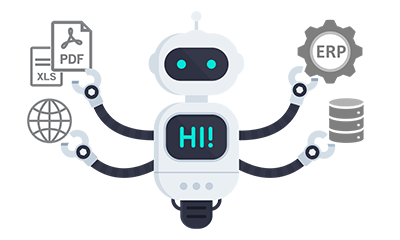
Looking at the current market of RPA and its latest trends in the industry, we can expect several ways which can be the future. Here are a few Future Predictions of RPA:
- Premier RPA solutions implemented by AI
Artificial intelligence is yet another popular technology solution ruling the world. When both these giants are combined, we can predict a superfine and well-automated solution for the industry. The trend will continue since AI offers wider opportunities by automating judgemental processes that involve both unstructured and non-digital data.
- Greater adoption of automation
Though most of them wear automation since it may eliminate manual works, the implementation of RPA can accelerate the growth of organizations which can also enhance the revenues and reduce the time & cost involved.
Read Also – Impact analysis of Covid-19 on Cloud Application Market
- Combination of digital and manual efforts
Software robots will automate the work of most of the people by taking complex, repetitive and tedious tasks. This can lead to a combination of both automation and manual efforts.
The future of RPA will see the usage of futuristic technologies such as AI, Advanced Data Analytics, Blockchain, Business Process Automation, Optical Character Recognition (OCR), combined with RPA to offer effective automation. We can also expect an increased growth with robotic process automation companies.
RPA is already here to bring dozens of business benefits in the name of automation. Moreover, getting started with RPA is also going to be simple. There are a couple of ways which can be done:
- Initially, one can get started with small approaches. This can be done by identifying high-value RPA processes, measuring vendors against the business requirements, implementing RPA tools & software, setting a system to perform the RPA process, and achieving the business objectives.
- One can also get started with outsourcing RPA development with RPA experts to automate business operations.
RPA has a very good future scope of RPA 2021. So, if you are a business person looking to make your operations automated, Robotic Process Automation can be a good choice.
